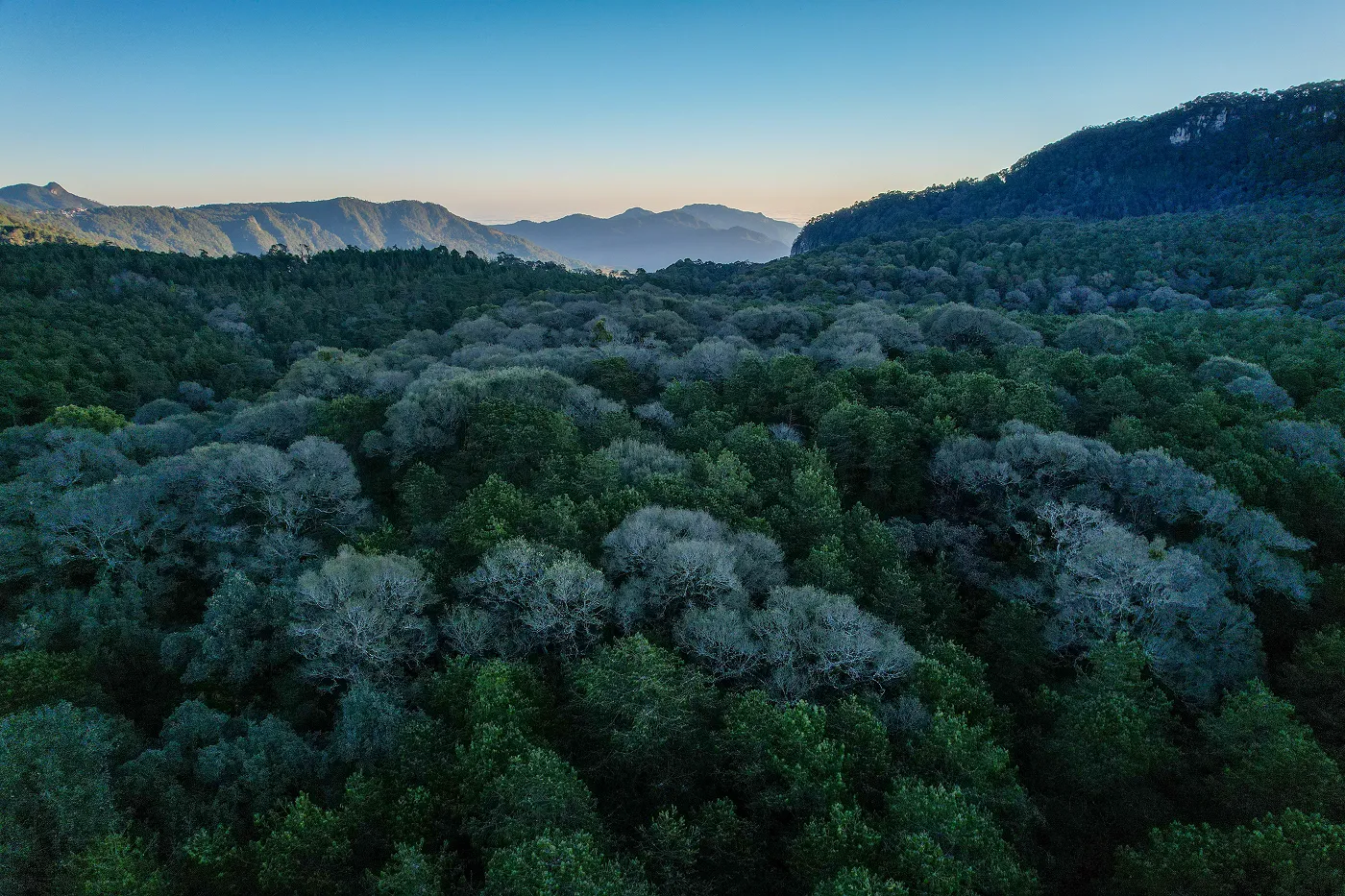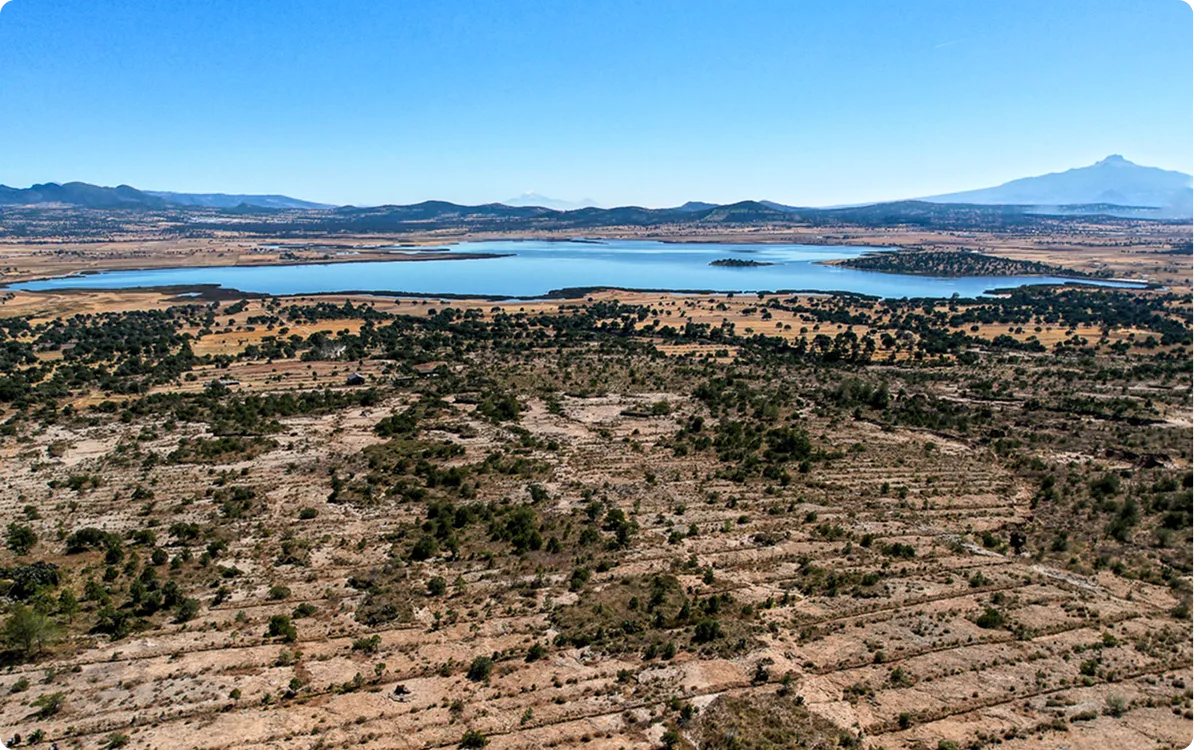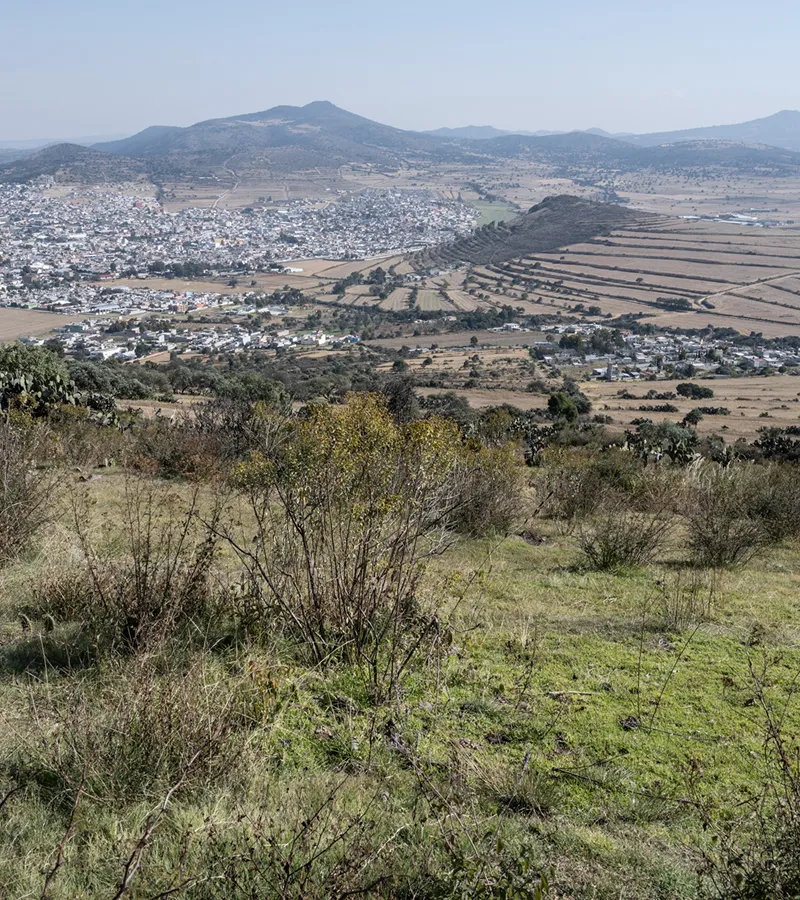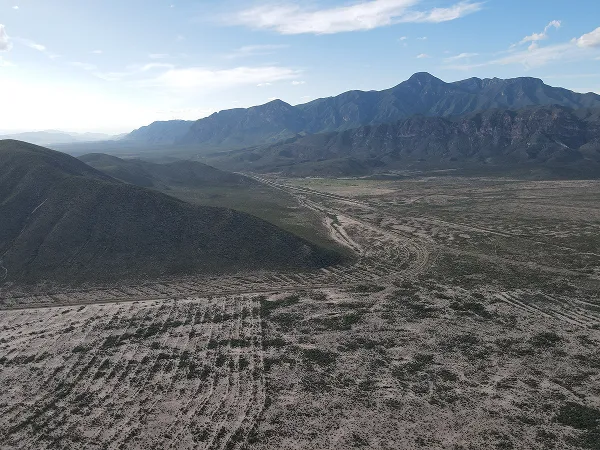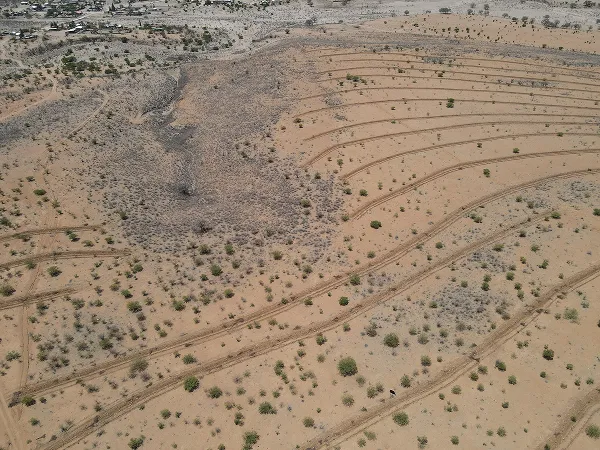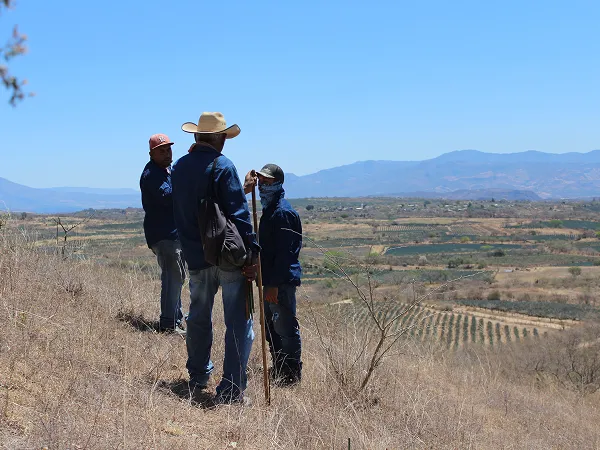Apan Aquifer
Water
Hidalgo, México
To restore the water health of the highlands of Hidalgo, this project implements nature-based solutions that recover recharge areas and conserve water from its source, generating lasting environmental and social benefits.
2.05
M
metros cúbicos
of volumetric water benefits
+
1.7
K
hectares
positively impacted by nature-based solutions
+
300
K
plants
reforested
13
ejidos and communities
involved
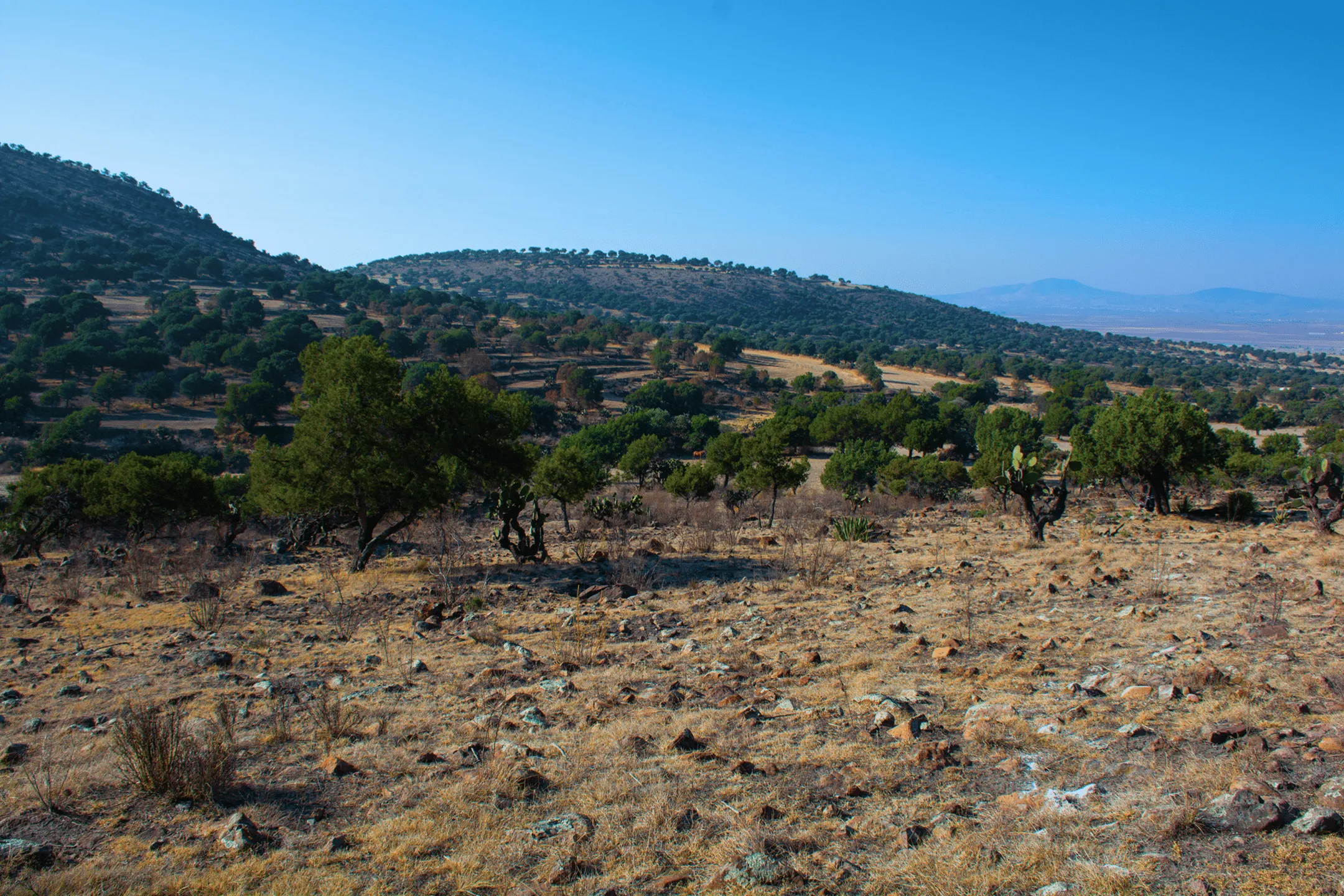
(01)
The context
Protecting Water from the Ground Up
In the highlands of Hidalgo, ecosystems have suffered degradation due to decades of agricultural overexploitation, erosion and diminished vegetation cover. This situation has jeopardized the ecological balance and recharge of the Apan aquifer, a body of groundwater essential for ensuring the supply of water within the region.
Faced with this scenario, Toroto, in collaboration with an implementing partner to offset its water footprint, and with the active participation of 13 ejidos and communities, is promoting a restoration effort with nature-based solutions. Reforestation with native species, seed dispersion with drones, soil conservation works and the removal of a lagoon are part of the actions that seek to recover the health of the landscape and conserve water from its recharge areas.
Location
Hidalgo, México
Dimensions
The project covers more than 1,700 hectares of intervention in key water recharge areas in the highlands of Hidalgo, within the Apan aquifer.
Productive Activities
The region is dominated by agricultural activities such as the cultivation of barley and oats and extensive livestock farming. As part of the project, a transition to more sustainable practices is being promoted, including community beekeeping, linked to plant restoration and the conservation of biodiversity.
Vegetation
The area has grassland vegetation, scrub and temporary agricultural areas, with an intermittent presence of mesquitales and species typical of semiarid climates.
Fauna
Mammals such as coyote (Canis latrans), field rabbit (Sylvilagus floridanus) and tlacuache (Didelphis virginiana); birds such as sparrowhawks (Accipiter striatus) and different grassland species; reptiles such as lizards (Sceloporus spp.) and snakes (Colubridae).
Flora
Plant species such as maguey (Agave spp.), nopal (Opuntia spp.), junipers predominate (Juniperus communis) and huizache (Acacia farnesiana), as well as trees such as oaks (Quercus spp.) and junipers (Taxodium mucronatum).
Certifier
Protocol
Verifier

“Sometimes we forget that the climate crisis is a territorial crisis. If we want to face it, we need to restore and manage hectares in a sustainable and regenerative way, otherwise there is no way.”

Santiago Espinosa de los Monteros Harispuru
CEO and Co-founder of Toroto
.webp)
.webp)
.webp)
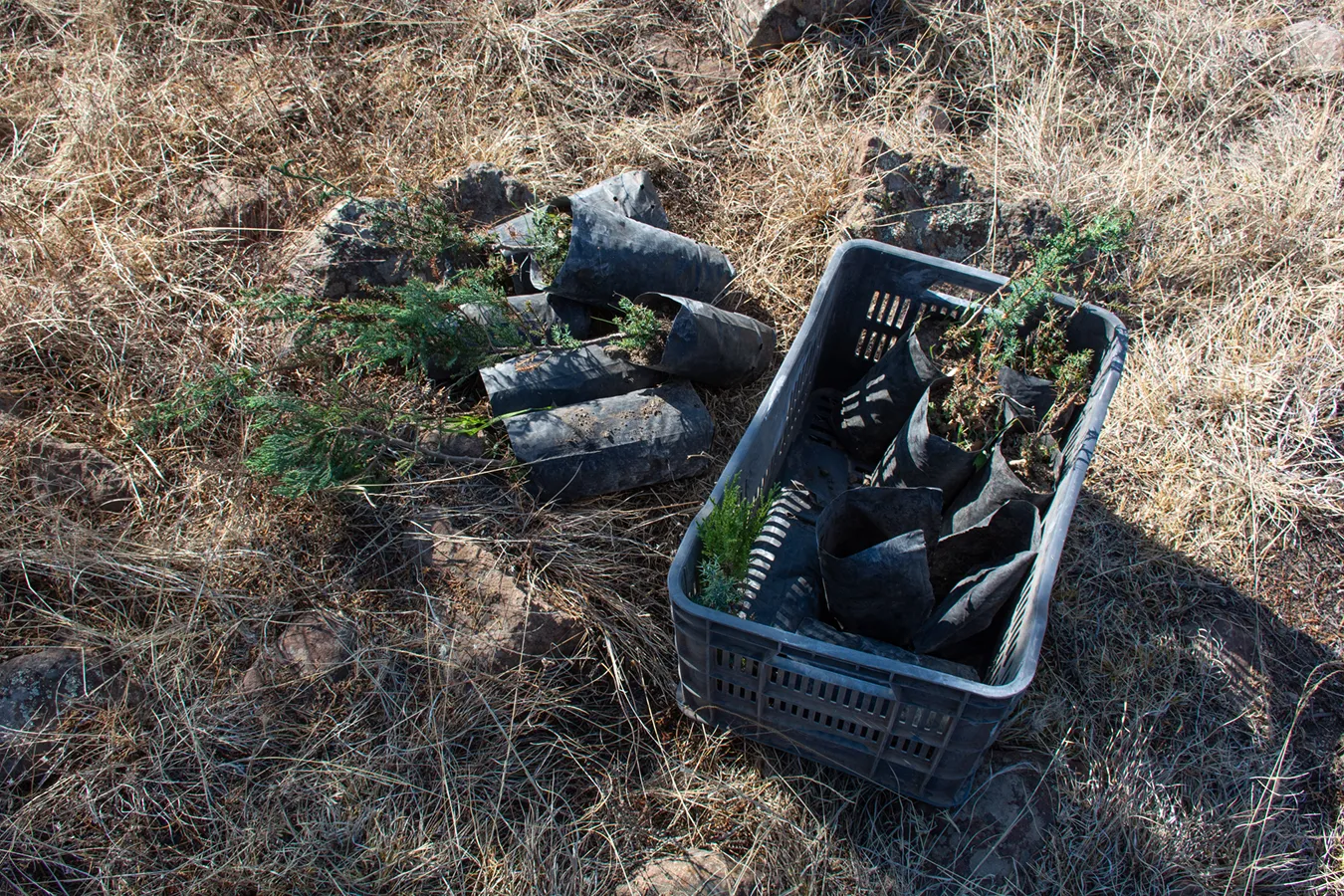

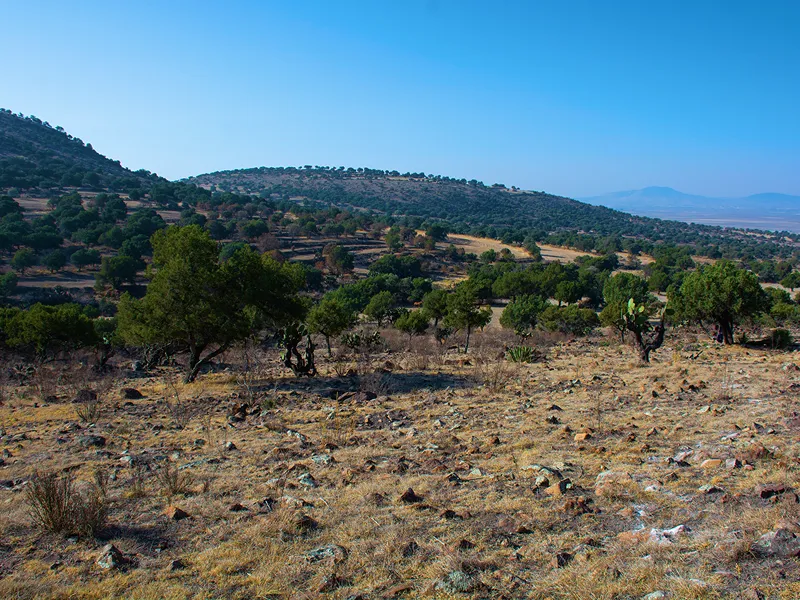
.webp)
.webp)
.webp)



.webp)
.webp)
.webp)



(03)
The Turning Point

NbS in Harmony with the Landscape
We carry out a series of soil and water conservation works that mimic natural processes and whose main objective is soil retention, reducing surface runoff and encouraging water infiltration. These actions are carried out in the upper and middle parts of the hills and hills to mitigate the progression of their degradation.

Governance Leads the Way
In ejido and community territories, local governance is the starting point. Communities not only authorize, but they lead the direction of the project: they identify priorities, participate in the design of interventions and guide their implementation. This approach ensures that actions respond to the real context and strengthen long-term ownership of the process.
A Portfolio with a Territorial Approach
Our portfolio ranges from tailor-made projects for companies that seek to compensate for the water they use in specific territories, to collaborative interventions that can be co-financed by different actors through our platform of projects ready to implement.
(04)
The Impact
Conservation with co-benefits

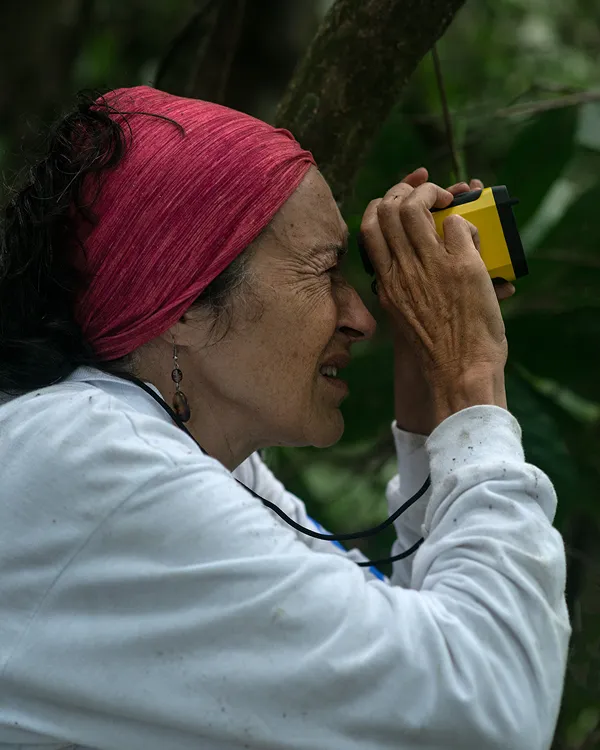
Stewarding the Land for the Future
We conduct regular evaluations to strengthen ecological restoration efforts from the start of the project. This includes ensuring the survival of reforestation areas, effective maintenance of soil conservation works, preventive pest and fire control and, when applicable, monitoring the performance of productive projects.

Biodiversity Follows Water
Biodiversity doesn't just enrich the ecosystem: it gives it structure, supports the soil and allows water to infiltrate. Restoring native vegetation through reforestation and assisted regeneration improves habitat quality, stabilizes the landscape and creates shelters for key species.
Through active monitoring — such as field trips and camera traps in strategic areas — we evaluate the presence of wildlife and identify areas of ecological connectivity. Thus, we ensure that the restoration not only captures water and carbon, but also recovers the functionality of the ecosystem.
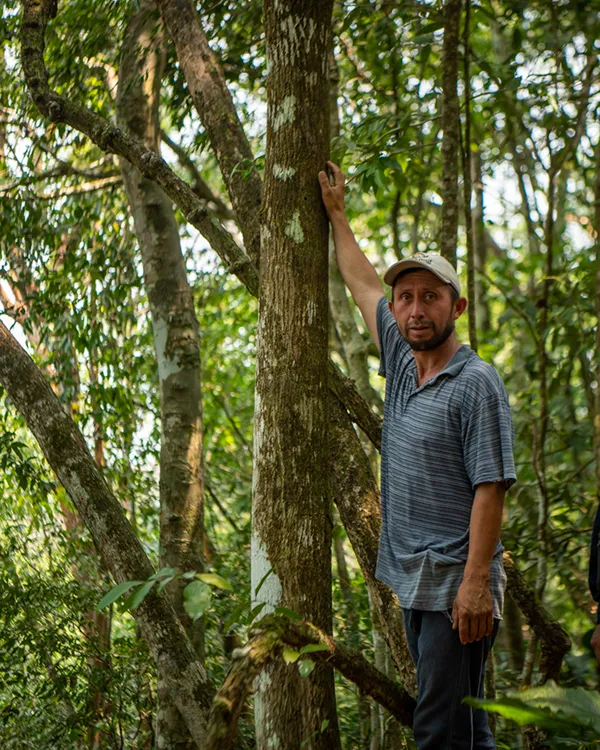
Building Local Capacities
The workshops and training are focused on providing new knowledge to promote a better relationship with nature and to be able to publicize the importance of the actions carried out in each of the Toroto projects. We show how to carry out fieldwork following an internationally recognized methodology. In addition, there are trainings aimed at ensuring the safety of brigade members and workers.
(04)
The Impact
Conservation with co-benefits
.jpg)
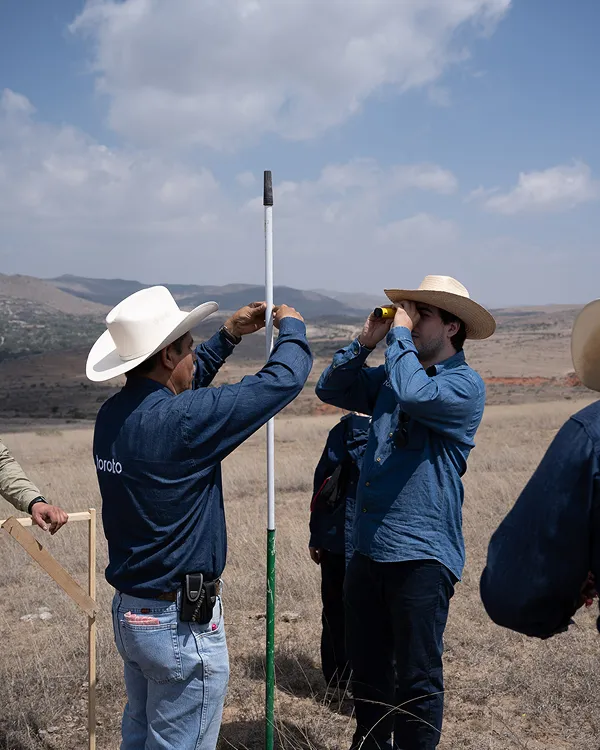
Stewarding the Land for the Future
We conduct regular evaluations to strengthen ecological restoration efforts from the start of the project. This includes ensuring the survival of reforestation areas, effective maintenance of soil conservation works, preventive pest and fire control and, when applicable, monitoring the performance of productive projects.
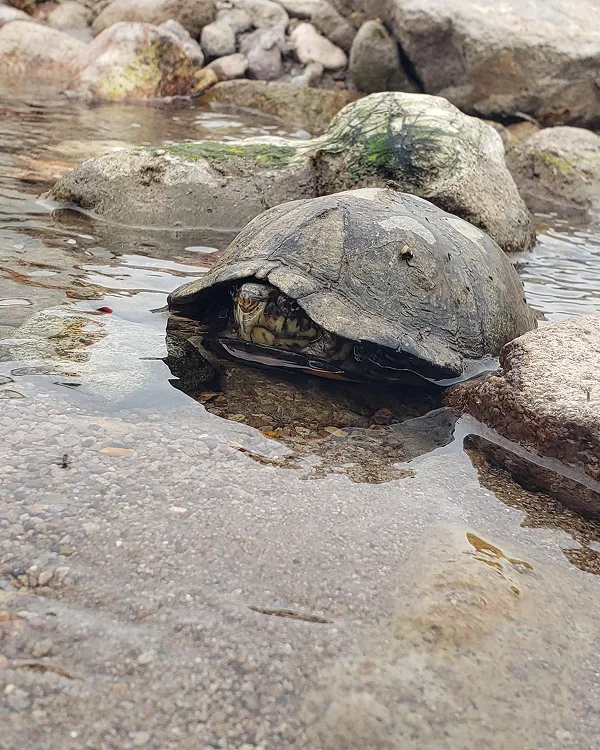
Biodiversity Follows Water
Biodiversity doesn't just enrich the ecosystem: it gives it structure, supports the soil and allows water to infiltrate. Restoring native vegetation through reforestation and assisted regeneration improves habitat quality, stabilizes the landscape and creates shelters for key species.
Through active monitoring — such as field trips and camera traps in strategic areas — we evaluate the presence of wildlife and identify areas of ecological connectivity. Thus, we ensure that the restoration not only captures water and carbon, but also recovers the functionality of the ecosystem.
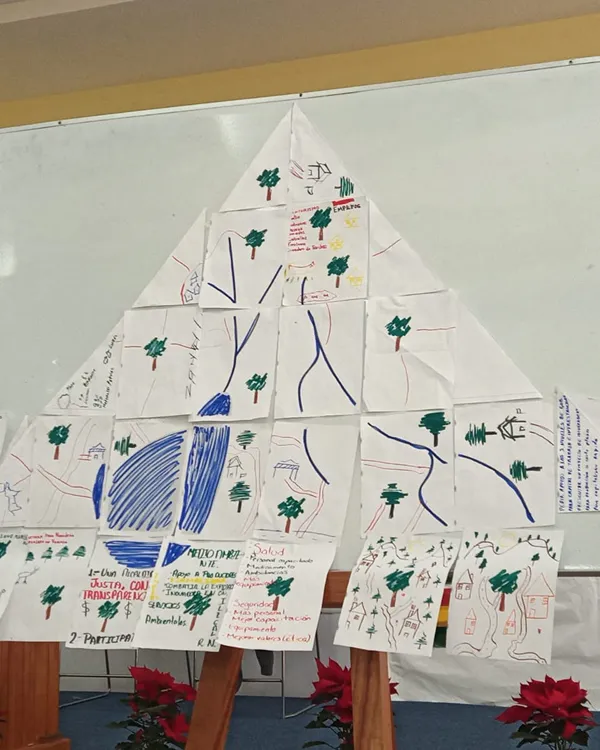
Building Local Capacities
The workshops and training are focused on providing new knowledge to promote a better relationship with nature and to be able to publicize the importance of the actions carried out in each of the Toroto projects. We show how to carry out fieldwork following an internationally recognized methodology. In addition, there are trainings aimed at ensuring the safety of brigade members and workers.
Regenerating nature, one project at a time
We do important things differently.
